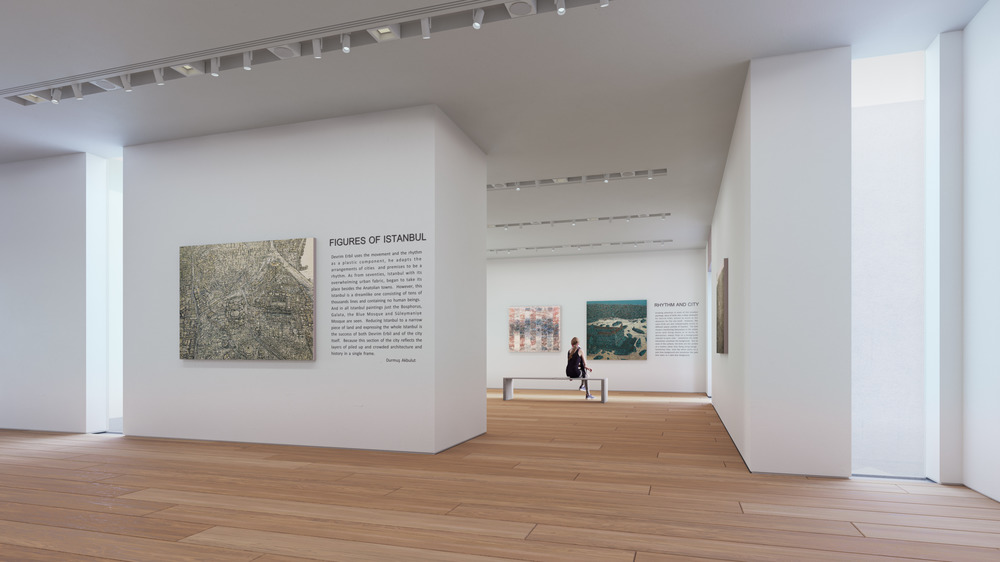07 Jul 2022

Aytac Architects, an award-winning architecture and research practice based in Istanbul, Turkey, is proud to proceed with its development of the DE Bodrum Museum, a custom design for contemporary Turkish artist, Devrim Erbil. Located in the city of Bodrum, and set against the blue waters of the Aegean Sea, the design was recognized as a WA Award Cycle 40 winner in 2021 as part of the World Architecture Community Awards.
Also Read | 4 ways to style your interior spaces with copper

Defined by a beautiful garden filled with tangerine trees, the site of the DE Bodrum Museum is located just minutes away from Erbil’s existing studio in the town of Ortakent. The primary objective of the project is to provide a physical site capable of embracing the vast cerebral horizons of the artist’s diverse works, ranging from oil paintings to carpets, mosaics, stained glass, and more.
Also Read | Arabic Resin art decor launches by Artist Madhavi Adalja
“In pondering a variety of typological museum models, we chose to design a project that would be defined by the sum of its many parts, in contrast to a single, monolithic structure,” explains Alper Aytac, Founder and Lead Architect of the firm bearing his name. “We chose to create a series of individual galleries that will be embraced as pieces of the existing city fabric, blending seamlessly into the surrounding landscape of Bodrum’s whitewashed stucco homes.”
Each of the galleries stands on separate supports, creating ample space for visitors to roam the grounds of the museum and the cool, shady area of its stunning garden. Amenities will include a temporary exhibition space, a workshop, a café, and a bookshop, essentially becoming a new meeting place in the City of Bodrum. The floating permanent galleries are arranged in a loop, beginning and ending in a museum spiral that connects to the garden level.
Also Read | Visioarq wins Architizer 2022 Architecture + Wood
“That new condition creates a hybrid space that is neither just a building nor a garden, with a blue mosaic ceiling, suspended above the hybrid space, rhythmically vibrates above the garden and becomes the main façade,” explains Alper Aytac. “And like a branching tree, the lifted structure creates a roof that frames the entire public square, with the fragmented structure organized in a grid that aligns with the tangerine trees and the artist’s studio.”

The two-story, 1,357m² museum sits on a 5,000m² site that includes the artist’s studio. In order to preserve the natural context and identity of the tangerine garden, a majority of the whitewashed stucco-built areas will be constructed using steel frames on concrete slabs, with pillars floating above the ground level. The elevated design also serves to offset any possible high groundwater due to flooding.
Also Read | The summer beach edit by Tisva
Additionally, a single underground structure will be built to collect and store rainwater for use in the hot summer months of the Mediterranean climate. A 32kw/hr solar array will also be installed on a green roof to help reduce the energy required to maintain the museum.
On the ground level, glass-enclosed public areas sit beneath the white stucco volumes to preserve maximum transparency and minimize impacts on the garden level. That transparency serves to blur the lines between the site’s interior and exterior spaces. The floating volumes will provide further shade for the garden, surfaced in custom blue mosaic tiles designed in collaboration with the artist.
A spiraling steel wheelchair ramp connects the garden to the museum above, serving as an interface with the artist’s permanent galleries. The ramp gradually becomes enclosed as it reaches the second level, with its southern wall punctured to create rays of light in the celestial birth pattern of the artist. The rest of the museum enclosure will feature north-facing slits to capture natural light.
Also Read | A floating pavilion as testing grounds for museum-to-be M. in Dutch new town Almere